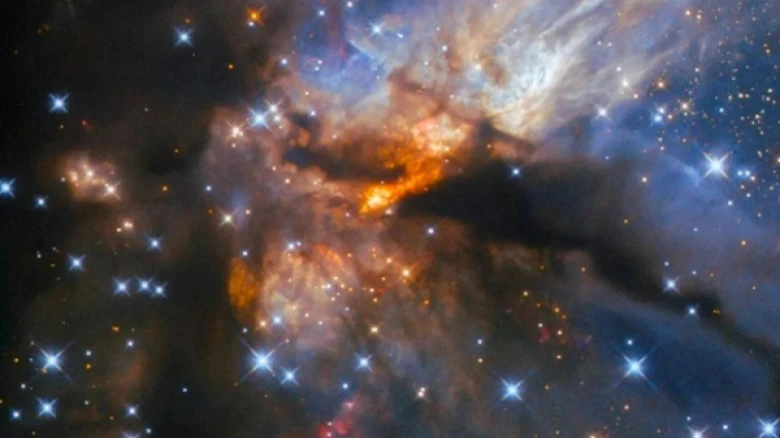The colour image displays an area recognized as a hotspot of high-mass star formation...
Digital Desk: Around 7,200 light-years away from Earth, the constellation Aquila is seen in a breathtaking photograph released by the NASA Hubble Space Telescope.
The colour image displays an area recognized as a hotspot of high-mass star formation, or G35.2-0.7N. These stars form in such a large way that they will explode as deadly supernovae after their lives.
But even in their formation, they have a significant impact on their environment.
NASA stated in the caption that NASA Hubble's Wide Field Camera 3 captured the photo of the light show. "In the constellation Aquila, located about 7,200 light-years from Earth you'll find this massive star formation with a protostellar jet streaming toward us."
Do you know what a protostellar jet is? NASA clarifies Protostellar jets are enormous, collimated beams of matter ejected from very young stars called protostars. The term "column-like" refers to the ejection of stuff in parallel streams, and it simply implies that the jets are collimated when they extend outward in relatively straight lines rather than wide.
"When ionization happens, it means that atoms and molecules become charged due to the high-energy environment they are in which causes them to lose some electrons. The protostellar jets have collimated beams of matter that are ejected from young stars called protostars. Collimated means that the matter is ejected in a parallel direction which resembles a column-like shape," the caption read.

Leave A Comment